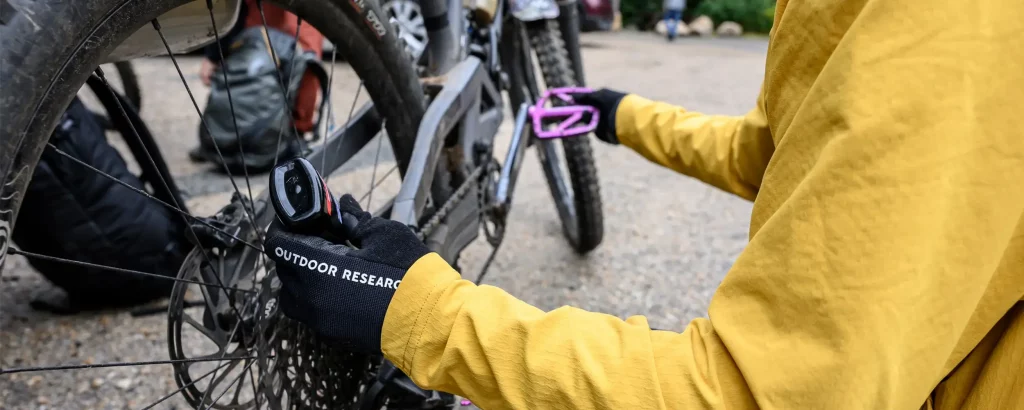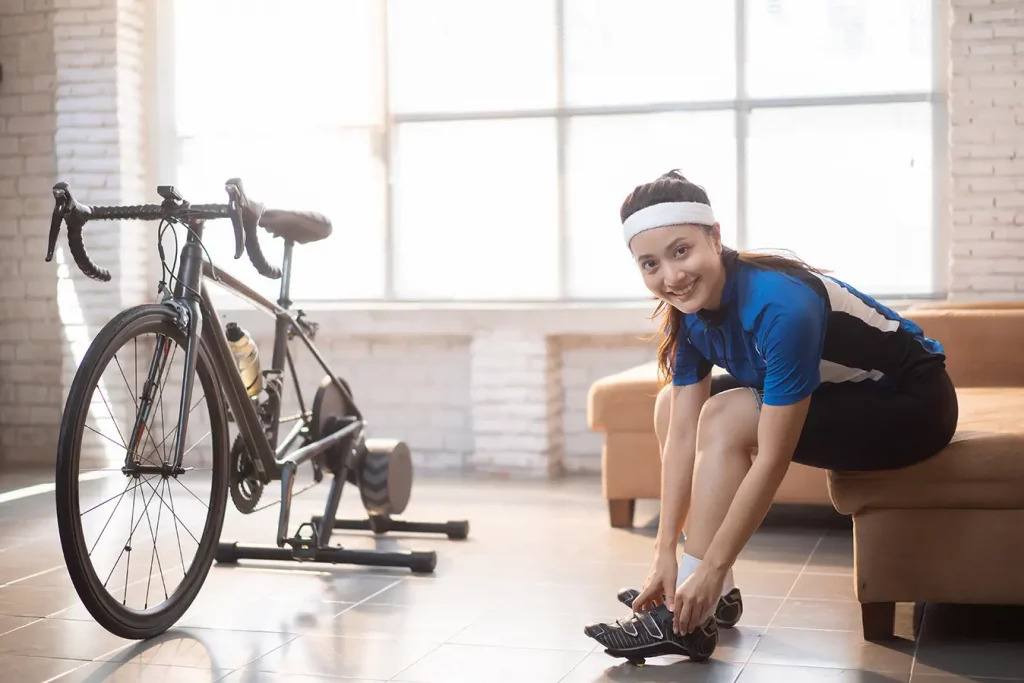The saddle has adjustments in three directions. Here are few advices from the owner of the cycling rental service bike-n-ride.com in Portugal.
- Saddle height
The saddle height should be such that your foot can easily reach the pedal with your heel when it is in the lowest position. Adjusting the saddle in the shoes you will be riding in is advisable. If the saddle is set too low (the cyclist sits in the saddle and reaches the ground with his feet), the leg muscles will tire faster since the legs will not straighten, and the muscles may “clog.” Only extreme sports enthusiasts lower the saddle too low.

It is not recommended to set the saddle too high. First, the foot will not reach the pedal, which can overload the back muscles since the cyclist will “skew” when pedaling. Second, the seating position will be too high, making it difficult to maintain balance when starting and getting off the bike.
- Adjusting the bike for height
In order to set the saddle to the desired height, you need to unscrew the bolt in the seat post assembly of the frame (or unscrew the eccentric)—you will have a saddle with a seat post attached to it in your hands.
As a rule, the seatpost moves freely in the seat tube, but it sometimes “gets stuck” (due to rust, etc.). In this case, you can use grease. After you pull out the seatpost, do not forget to wipe off the remaining grease.
So, you find the desired position (pay attention to the risks on the seat post) and fix the Seatpost by tightening the bolt or eccentric.
- Saddle tilt
As a rule, the saddle is installed horizontally relative to the ground. However, many find other positions for themselves.
To adjust the saddle’s position, you need to loosen the saddle clamping mechanism in the seat post, unscrew the corresponding bolt/nuts, install the saddle in a comfortable position, and secure it by tightening the bolt/nuts (with a classic mount, you will need open-end or spanner wrenches to unscrew two nuts; to adjust a saddle with a bolt mount, you need to use a hex key to loosen the bolt).
- Forward-backward adjustment (offset)
The ability to adjust the saddle forward and back is usually limited to a few centimeters. But there are rules here, too.
After each saddle tilt or “forward-backward” adjustment, check whether you have properly tightened the seat post lock. Bicycle saddles “like” to loosen up, and if you ride for a long time with the saddle in a loose position, the special notch can wear out and the saddle will no longer be “tightened” no matter how hard you try.
II. Adjusting the handlebars
- Height adjustment
The height of the handlebars depends on the position in which you will ride.
If the handlebars are raised too high, it is difficult to move uphill; if the handlebars are lowered too low, it is more difficult to control the road situation.
When riding on roads with car traffic, the cyclist’s back should be at an angle of approximately 30″ to the vertical. The recommended body tilt for fitness and light walking is 45″-60″/60″-90″. For the elderly and children, the recommended body tilt is 60″-90″. For road bikes, the cyclist’s landing should be lower.
Not all bicycles can adjust the handlebars within a wide range. On bicycles with threadless headset columns, the handlebars can only be raised by a few millimeters by installing additional spacer (distance) rings. The height of the handlebars can only be reduced by installing a different type of stem.
- Steering wheel centering
There are steering wheel center marks on the steering wheel. Usually, the steering wheel is installed correctly if these marks are hidden where the steering wheel is attached. However (very rarely), these marks are misapplied. If you have discovered the manufacturer’s mistake by eye, you must center the steering wheel with a tape measure.

- Centering the front wheel relative to the steering wheel.
Having slightly loosened the steering wheel fasteners, place the front wheel between your legs (the bike faces you) and center it perpendicular to the steering wheel.
Turn both wheels with the brakes released. The brake pads should be 1-3 mm from the rim and close to the rims with their entire plane. They should not touch the tire or be below the rim.
Press and release the brake levers several times. They should not rest against the handlebars (“fall through”) and should not “sink”, that is, return to their original position with difficulty. The brake levers should not be too soft or too tight.
- Check for play and loose bolts
Ensure the steering wheel is firmly fixed in the stem, and the steering column has no play.
Check the reliability of the fastening of both wheels in the forks (believe me, it is not the most pleasant feeling when, for example, the front wheel jumps out and rolls in front of you!).
Check that the seat post and seat are securely fastened to the frame tube and the seat is securely fastened to the seat clamp.

- Adjust the gear shifters
- Check the tire pressure and condition of the tires
The recommended pressure is marked on the sidewall of the tire. Do not inflate the tires above the maximum pressure. High pressure corresponds to riding on hard, dry surfaces. Low pressure is suitable for riding on snow, dry sand, slippery, and clay roads. It is best to inflate the tires with a pump with a pressure gauge. If there is no pressure gauge, then you can roughly estimate the amount by which the tire bends under the cyclist’s weight —it should be within one centimeter.


































